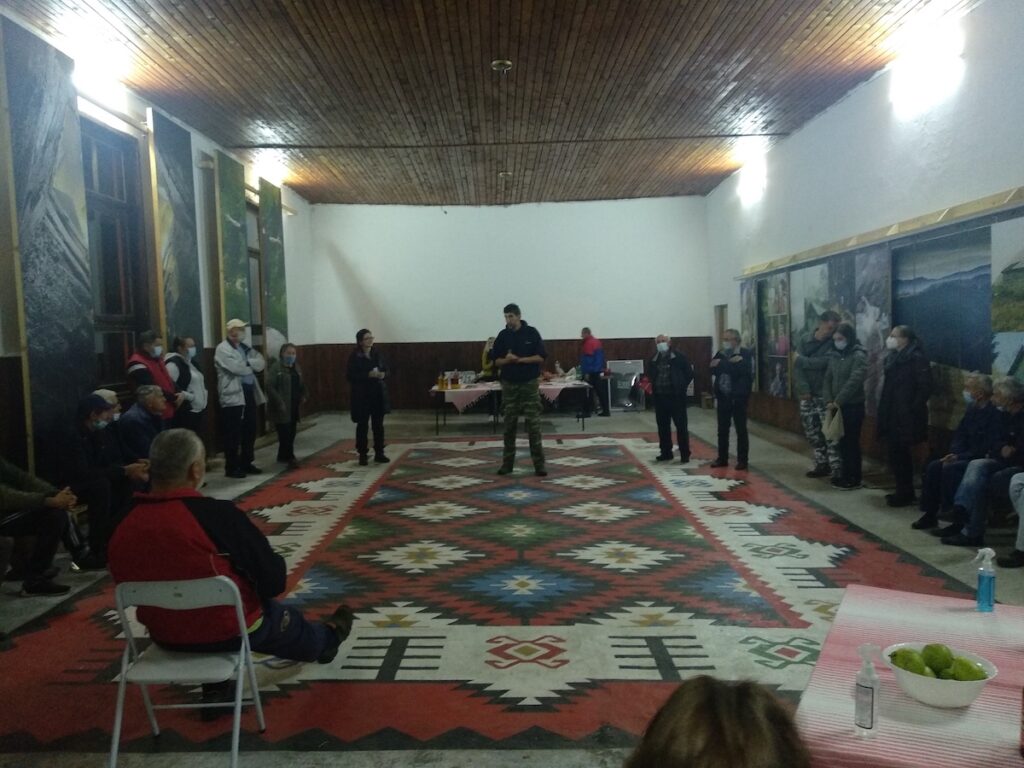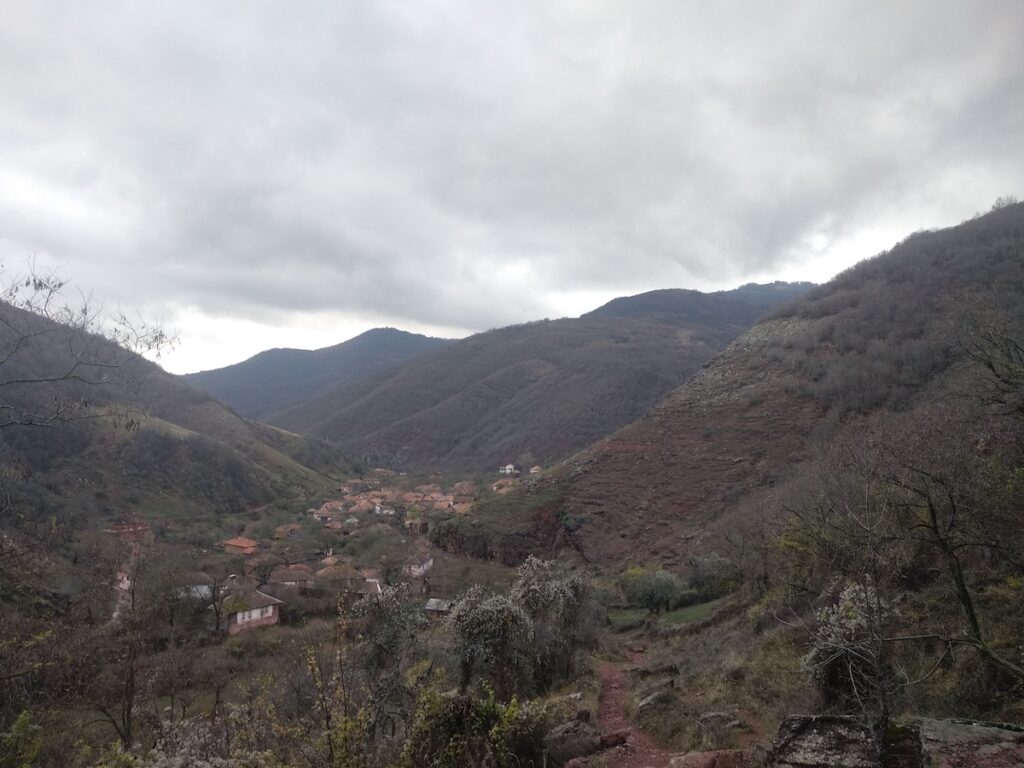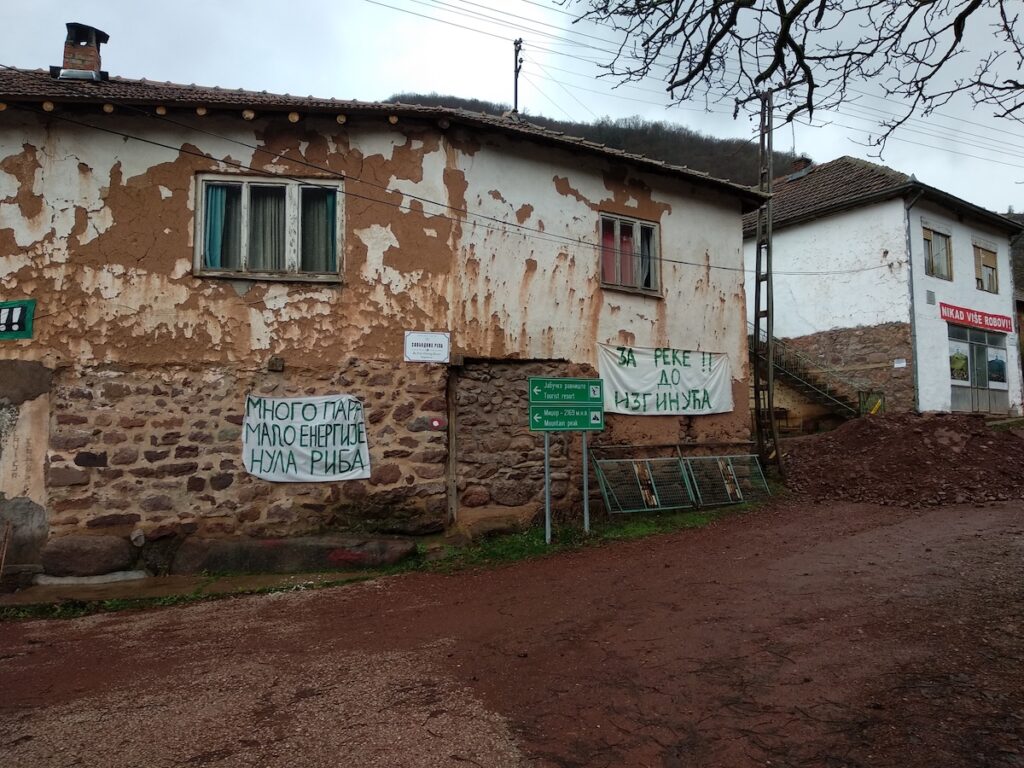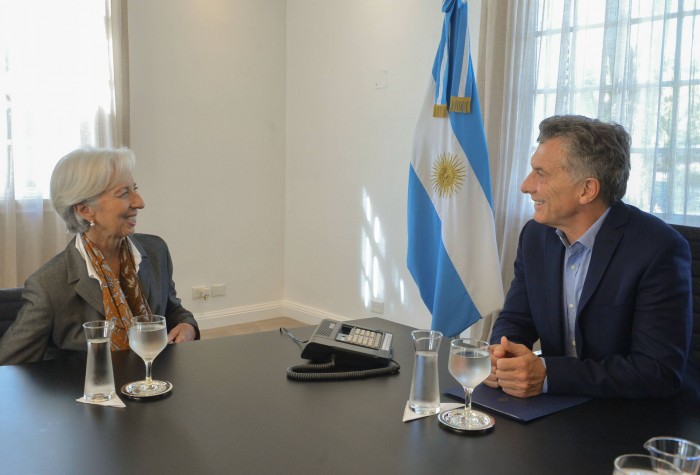This post is part of a feature on “The Political Power of Energy Futures,” moderated and edited by Katja Müller (MLU Halle-Wittenberg), Charlotte Bruckermann (University of Bergen), and Kirsten W. Endres (MPI Halle).
When you enter the House of culture in Dojkinci, a small village on Stara Mountain, you are instantly amazed by its floor. The freshly painted red, green, and blue patterns revived the previously cracked ground. These traditional geometrical shapes are landmarks of ćilim – a centuries-old weaving technique of wool from sheep herds on the Stara Mountain. Few steps inside, and you are surrounded by the large photographs of nature, people, and customs characteristic of this mountain in eastern Serbia. Only a year ago the walls covered by the photographs were molded due to the damaged roof and windows. The building was empty and in decay. It became again the center of the village’s social life after

the villagers together with architecture students and their teachers and the grassroots movement Odbranimo reke Stare planine (Let’s defend the rivers of Stara Mountain) renovated this building in 2019 as an act of resistance to the threat of small hydropower plants (SHPPs). SHPPs consist of several kilometers-long pipelines, which channel water to the turbines where the electricity is produced, threatening to leave the riverbeds dry and local communities without water. The more water the pipe holds, the more electricity the turbine creates and the more profit through subsidies it brings to private investors. Thus, for the local villagers and environmental activists the pipes of SHPPs came to symbolize greed, environmental destruction, and social marginalization.
The SHPP in Dojkinci, together with almost 3000 plants in the Western Balkan countries, arose from the network of national capitalists, European banks, and the national energy sectors responding to the EU accession standards. However, Dojkinci and other villages in the Stara Mountain did not succumb to such a wide front of interests. My contribution examines how this happened. I will firstly explain how SHPPs emerged from the Serbian renewable energy (RES) market, and then describe the social responses triggered by SHPPs.
Renewables between liberalization and water-grabbing
The Serbian RES market emerged from the pressures for liberalizing the energy market, the government’s resistance, and the inflows of Western European capital. The liberalization of the energy sector in the EU candidate-countries is part of the broad legal, economic and political compliance to EU standards. The EU expects the Serbian energy sector to go through a double transformation. From a state-owned system that is largely dependent on coal, the sector should become competitive, decentralized, at least partly privatized, and promote renewable energy. This ambitious task unifies both liberalization and energy transition, keeping the logic of the free market as their leading principle. In the early 2010s, the Serbian government established the foundations of the RES market, consisting of a certification procedure for green electricity producers and fixed-rate feed-in tariffs (FITs) guaranteeing beneficial prices for 12 years. FITs are the means of subsidizing renewable energy production. They are paid by all citizens through their electricity bills and transferred to the producers in a form of subsidized electricity prices
If it had followed entirely the prescribed logic of unfettered competition, the Serbian RES market could have had severe social, political, and economic effects. The state’s monopoly could have turned into an oligopoly of European companies, with FITs pushing up the low electricity prices – repeating developments already seen in Spain (Franquesa 2018). To prevent this scenario, the government found a middle way: to establish the RES market but prevent significant changes. It limited access to FITs through technology and capacity caps. These limitations targeted large investors in wind and solar, but also local people interested in installing small numbers of solar panels on private property. Foreign investors quickly filled the quotas for wind power subsidized by FITs. Only one channel for investments remained wide open – around 800 locations for SHPPs in mountainous, often protected regions.
Investors and authorities claimed that hydropower is identical to wind and solar sources. The ideology of untapped hydro potentials, anchored in the socialist technological heritage, is widespread among Serbian engineers and continuously supported by all Serbian governments since the 2000s. The costs for planned SHPPs were lower because expertise in the hydropower construction sector already exists since socialism. Moreover, SHPPs technology is not as capital-intensive and dependent on the economy of scales as larger solar and wind parks. This combination of technological and economic factors meant that the costs were low and that smaller investors could easily access the financial market. Alongside the international banks and a few private investors from Western Europe, people with close affiliation to the Serbian ruling party invested in and owned the new SHPPs, among them, the godfather of the Serbian president. This implies that after repaying credits for the SHPPs, the profits gained through FITs would stay within the circles of national capitalists unlike profits from foreign-owned wind or solar parks. The purpose of SHPPs was not to transform the energy sector, as they only contribute to the national electricity production with 2.5%, but rather to guarantee easy profits through FITs.
Even though SPPSs investors were usually local capitalist, it does not mean that it has not been a lucrative opportunity also for foreign capital in the region. European financial institutions and manufacturers of hydro equipment have followed a well-established path of foreign direct investments that have transformed the political, economic, and social fabrics of the postsocialist countries. SHPPs have been a good opportunity for the Western European producers of hydro equipment to reanimate an industry drowning because of the current rush for wind and solar sources. Hydro lobbies organized conferences that connected national energy authorities, public producers of electricity, manufacturers, and financiers, to consider new fruitful investments. Foreign financial capital played a key role in supporting SHPPs in the region. Most of the credits for SHPPs in Serbia came from commercial banks such as Erste Bank, UniCredit, Banka Intesa, and Société Général. Large financial institutions like European Investment Bank, European Bank for Reconstruction and Development, and World Bank’s International Finance Corporation, together with Norwegian, Austrian, German, and Italian development banks, poured hundreds of millions of euros into greenfield hydro projects in the region (Bankwatch 2019).
In this context, environmental and local community protection mechanisms were hardly implemented and succumbed to the immense pressure of national and international capital and power. The government lowered environmental standards, allowing the RES market to turn into water-grabbing. Researchers from the University of Belgrade identified on all inspected SHPPs malfunctioning or dry paths for fish migration and pipes unlawfully built-in riverbeds. They argued that the rule of “biological minimum”, which was supposed to guarantee the minimum level of water in riverbeds to sustain the river, was conducted by experts close to the investors and without systematic, often costly studies (Ristić et al 2018). This “biological minimum” therefore could not limit the investors’ arithmetic transformations of water into kWh and FITs, leaving behind dry riverbeds especially in protected areas with high biodiversity, such as the Stara Mountain.
Struggles against SHPPs
I first visited the village Topli Do in the Stara Mountain in December 2019, while the residents had been barricading the bridge in the village for three months to stop an investor from trying to build two SHPPs on both rivers flowing through their village. Most of them were retired people and small-scale agricultural producers, fearing that SHPPs would disturb the underground water that they use for drinking, as well as pollute and reduce the water in rivers for livestock and gardens. Numerous springs and waterfalls attract many visitors to the village, and the villagers were afraid that SHPPs would spoil both natural exceptionality and their opportunity for supplementary incomes through room rentals.

Residents of Topli Do and nearby villages recognized the state and investors as the main perpetrators and directed their anger towards them. But they also conveyed their existential anxieties through narratives of the “approaching global wars for water”, “international corporations stealing water”, and “extinction of their communities for settling migrants” from the Middle East who lived in a refugee camp in the nearby town of Pirot. These anxieties sprouted from the long-term sentiments of the vanishing of Serbian villages where mostly elderly people live. Decaying homes and infrastructure, closed schools, and ambulances are the material witnesses to rural flight. In this context of social degradation, the investors and local authorities promoted SHPPs as opportunities for development. The locals told me that the municipality fabricated the mandatory consultations with them, and portrayed SHPPs as benevolent water mills, and promised benefits for everyone – temporarily employed local workers and landowners near the rivers. “I wanted to bring improvement to this village which has had nothing, I brought my one million euros”, the investor in Topli Do SHPP said in a documentary film about the Topli Do barricade (Marinković 2020).
“The investor even asked us why defending the villages of the Stara Mountain when they would anyway disappear in a few years”, one activist told me. Between 2017 and 2020, the movement Let’s defend the rivers of Stara Mountain resisted heavily SHPPs in Stara planina through protests, legal actions, and physical clashes. Through its actions, the movement connected villagers in Stara planina, academics, environmental NGOs, and international organizations with their pan-European campaigns against SHPPs in the Balkans. Finally, faced with such a broad resistance, the local municipality terminated all SHPPs in the Stara Mountain in September 2020.

I came again to the Stara Mountain during the pandemic in October 2020, this time in Temska and Dojkinci villages. The mood was post-victorious since villages were not endangered anymore by SHPPs. The activists and locals thought about how to use the momentum and transform the symbolic capital of the river defenders into something more. They looked for financial and institutional support for infrastructure, housing, research centers, and small-scale businesses in the Stara Mountain, and the House of culture in Dojkinci was a result of these efforts. Revitalizations were both immediate reactions to the threatening devastation from SHPPs, and opportunities to demonstrate that revival of the disappearing rural communities was possible and necessary. For the locals, these renovated objects represented debt repayments to ancestors and predecessors and a promise that life in the Stara Mountain would not end, as the leader in one of the villages told me.
Unlike in other Serbian mountains, the SHPPs paradoxically rescued the villages in the Stara Mountain from disappearance and marginalization by reviving the local communities and garnering the support of the Serbian civil society. Attempts to make profits from greenwashing unexpectedly turned into a second chance for some Serbian communities.
Whose market, whose energy transition?
SHPPs were supposed to maintain a status quo in the energy sector – to represent a Godotian energy transition that never arrives and does not go anywhere. However, the wide social resistance turned energy transition from a techno-bureaucratic matter in to an issue decisive for society’s future. This change led to questions about who has access to the RES market, who gets benefits from it, and what role society plays in the energy transition.
These questions are becoming prominent among newly forming energy cooperatives interested in small-scale investments in solar energy. So far, they have been largely excluded from the RES market, not recognized as potential producers, and therefore unable to apply for FITs. Energy cooperatives criticize the closedness of the market to “ordinary people” and aspire to unify activism and business initiative allowing citizens to become active drivers of the energy transition and simultaneously benefit from FITs. Therefore, solar panels are trying to make their way to the roofs of urban dwellings to demonstrate sustainable and market-democratic alternatives open nominally to everyone.
While the aspiring cooperatives are wishing for a more inclusive market, experts and regional media specialized in energy are also calling for more and better markets, i.e. for the usual liberalization that supposedly corrects market distortions with improved market mechanisms. They wish for competition between big investors with access to credit and technology, which would ensure that the public gets measurable and less expensive electricity from renewable sources. This belief in the market as the only vehicle of energy transition follows the EU agenda which emphasizes decentralized, competitive, and interconnected national markets. Public tenders and premiums will most likely be implemented in Serbia’s new energy laws. These laws will launch a new race between large foreign and national investors in wind and solar power.
Such investors wish for a free, unregulated market. A free market which gives space to big and small producers, fosters innovations and initiative. This kind of market is seen as a more fair and sustainable solution than the one favoring SHPPs through FITs. But whose market and energy transition will that be? And the transition to what? The competition between large investors will hardly open substantial space for the development of energy cooperatives. The odds for a more democratic and just energy transition are slim if the promise of the decarbonization of the Western Balkan countries conveys the ultimatum of oligopolies.
Dragan Djunda is a Ph.D. candidate at the Department of Sociology and Social Anthropology, Central European University. His doctoral research analyses the investments in renewable energy in Serbia and their social effects.
Bibliography
Franquesa, Jaume. 2018. Power Struggles: Dignity, Value, and the Renewable Energy Frontier in Spain. Indiana University Press.
Marinković, Zorica. dir. 2020. Topli Do – donžon Stare planine” [Topli Do – donjon of the Stara Mountain].
Ristić, Ratko, Ivan Malušević, Siniša Polovina, Vukašin Milčanović, Boris Radić. 2018. Male hidroelektrane derivacionog tipa: Beznačajna energetska korist i nemerljiva ekološka šteta. VODOPRIVREDA, Vol. 50 [Derivate small hydropower plants: Insignificant energy contribution and unmeasurable ecological damage].
Bankwatch, 2019. “Western Balkans Hydropower: Who Pays, Who Profits?” Accessed February 23, 2021. https://bankwatch.org/publication/western-balkans-hydropower-who-pays-who-profits.
Cite as: Djunda, Dragan. 2021. “Transition to nowhere: Small hydro, little electricity, and large profits in Serbia.” FocaalBlog, 9 April. https://www.focaalblog.com/2021/04/09/dragan-djunda-transition-to-nowhere-small-hydro-little-electricity-and-large-profits-in-serbia/
